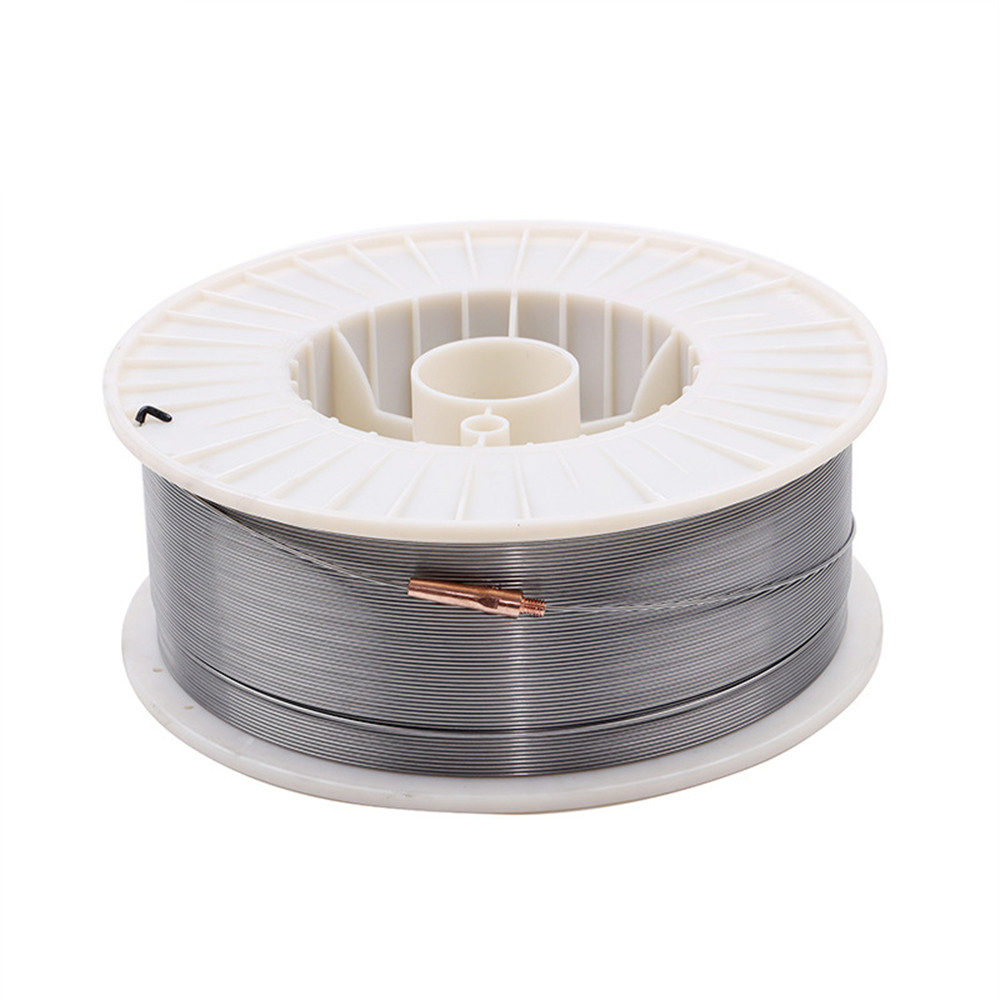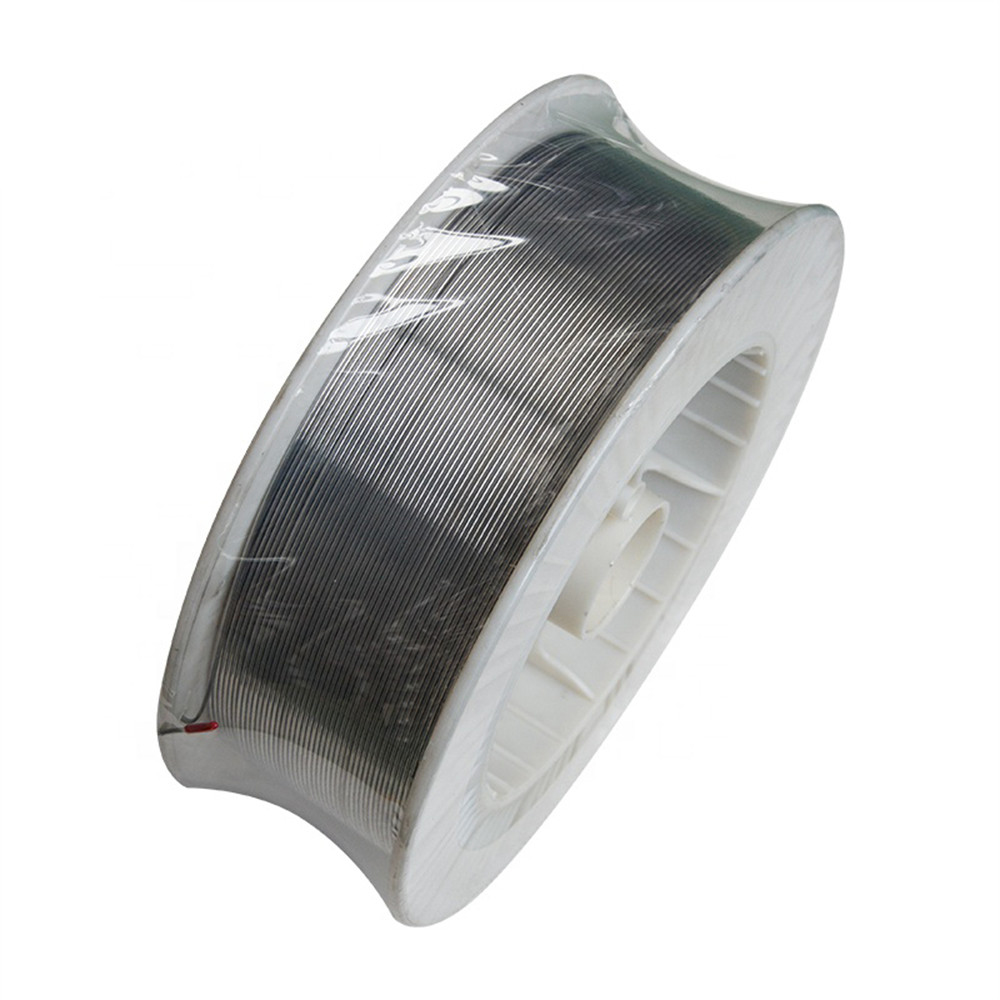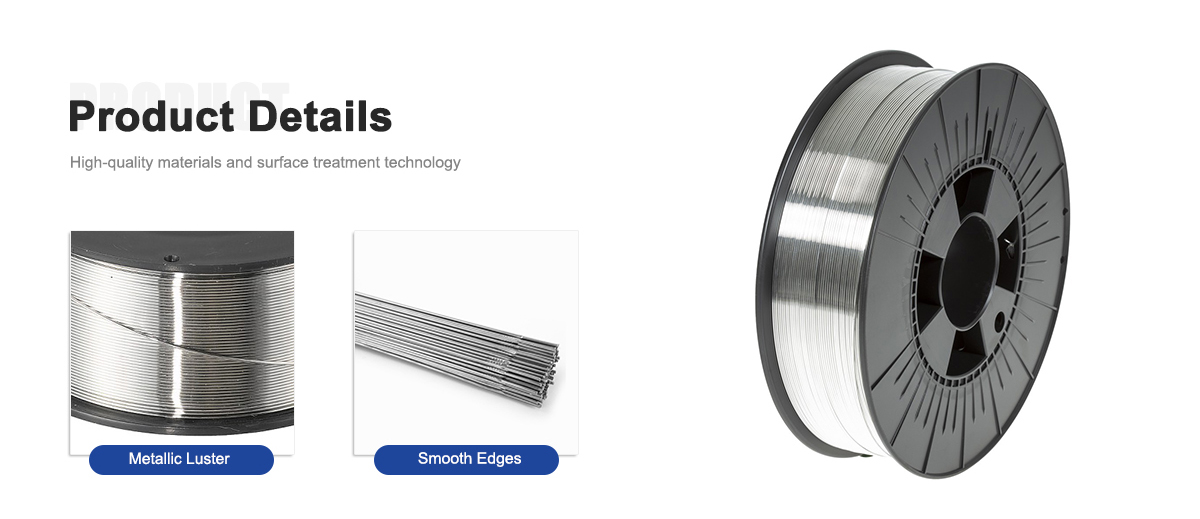 0
0
Products Description

Nickel-based welding wire is widely used in coal-fired boilers. As an important piece of equipment in a high-temperature, high-pressure environment such as coal-fired boilers, the selection of welding materials is crucial to ensuring the safe operation of the boiler and extending its service life.
Nickel-based welding wire offers several advantages in the welding of coal-fired boilers. First, nickel-based welding wire has excellent high temperature resistance. Inside a coal-fired boiler, there are high-temperature combustion gases and thermal cycles, and nickel-based welding wire can maintain high strength and stability in high-temperature environments and is not prone to deformation and cracks, ensuring the reliability and sealing of welded joints. .
Secondly, nickel-based welding wire has good corrosion resistance. In coal-fired boilers, the gas and smoke generated by combustion contain corrosive substances, such as sulfides, chlorides, etc., which can easily cause corrosion and erosion to welded joints and material surfaces. Nickel-based welding wire has high corrosion resistance and can effectively resist the erosion of these corrosive media and extend the service life of the welded joint.
In addition, nickel-based welding wire can adapt to the thermal expansion and contraction caused by temperature changes in coal-fired boilers. It has good thermal expansion properties, can absorb thermal stress, reduce stress concentration on welded joints and equipment structures, thereby reducing the risk of damage and fracture caused by thermal fatigue.
When selecting nickel-based welding wire for welding coal-fired boilers, factors such as boiler working conditions, welding joint requirements, and material compatibility need to be considered to ensure welding quality and joint reliability. In addition, strict quality control and welding monitoring are also key measures to ensure welding quality.

Welding series:
ERNiCrMo-3,ERNiCrMo-4,ERNiCrMo-13,ERNiCrFe-3,ERNiCrFe-7,ERNiCr-3,ERNiCr-7,ERNiCu-7,ERNi-1, ER70S-6.
Standard: Conforms to Certification AWS A5.14 ASME SFA A5.14
Size: 0.8MM / 1.0MM / 1.2MM / 1.6MM / 2.4MM / 3.2MM / 3.8MM / 4.0MM / 5.0MM
Form: MIG(15kgs/spool), TIG(5kgs/box),Strip
Parameter:

Main component: nickel alloy (nickel is the main component, including other alloy elements)
Diameter range: usually between 0.8mm and 2.4mm
Strength: High strength and excellent mechanical properties
High temperature resistance: able to withstand stress and thermal cycles in high temperature working environments
Corrosion resistance: Ability to resist erosion by corrosive media and chemical substances in coal-fired boilers
Item | ERNiCrMo-3 | ERNiCrMo-4 | ERNiCrMo-13 | ERNiCrFe-7 | ERNiCr-3 | ERNiCu-7 | ERCuNi | ERNi-1 |
C | 0.1 | 0.02 | 0.01 | 0.04 | 0.1 | 0.15 | 0.03 | 0.15 |
Mn | 0.05 | 1 | 0.5 | 1 | 2.5-3.5 | 4 | 0.5-1.0 | 1 |
Fe | 5 | 4-7 | 1.5 | 7-11 | 3 | 2.5 | 0.65 | 1 |
P | 0.02 | 0.04 | 0.015 | 0.02 | 0.03 | 0.02 | 0.01 | 0.03 |
S | 0.015 | 0.03 | 0.005 | 0.015 | 0.015 | 0.015 | 0.01 | 0.015 |
Si | 0.05 | 0.08 | 0.1 | 0.5 | 0.5 | 1.25 | 0.15 | 0.75 |
Cu | 0.5 | 0.5 | N/A | 0.3 | 0.5 | rest | rest | 0.25 |
Ni | ≥58 | rest | rest | rest | ≥67 | 62-69 | 30-32 | ≥93 |
Co | N/A | 2.5 | 0.3 | N/A | N/A | N/A | N/A | N/A |
Al | 0.4 | N/A | 0.1-0.4 | 1.1 | N/A | 1.25 | 0.15 | 1.5 |
Ti | 0.4 | N/A | N/A | 1 | 0.75 | 1.5-3 | 0.5 | 2-3.5 |
Cr | 20-23 | 14.5-16.5 | 22-24 | 28.5-31 | 18.0-22.0 | N/A | N/A | N/A |
Nb+Ta | 3.5-4.15 | N/A | 1.8-2.5 | 0.01 | 2.0-3.0 | N/A | N/A | N/A |
Mo | 8.0-10 | 15-17 | 15-16 | 0.5 | N/A | N/A | N/A | N/A |
V | N/A | 0.35 | N/A | N/A | N/A | N/A | N/A | N/A |
W | N/A | 3.0-4.5 | N/A | N/A | N/A | N/A | N/A | N/A |
Rest | ≤0.50 | ≤0.50 | ≤0.50 | ≤0.50 | ≤0.50 | ≤0.50 | ≤0.50 | ≤0.50 |

Nickel and Nickel Alloy Welding Wire | |
Product Model (AWS) | Application |
ERNiCr-3 | For welding 600, 601 and 800 alloys themselves, and welding dissimilar steels between stainless steel and carbon steel ERNiCrFe-7; For welding Inconel alloys within ASTM B163, 166, 167 and 168 |
ERNiCrFe-6 | For welding of steel and Inconel, welding of steel and stainless steel and nickel-based alloys |
ERNiCrCoMo-1 | Dissimilar welding for welding nickel-chromium-cobalt-molybdenum alloys and various superalloys |
ERNiCrMo-3 | It is used for welding of nickel alloy, carbon steel, stainless steel and low alloy steel, mainly used for welding of 625, 601, 802 alloy and welding of 9% nickel alloy |
ERNi-CI | Industrial pure nickel for welding malleable and grey cast iron |
ERCuNi | For welding of 70/30, 80/20, 90/10 copper-nickel alloys |
ERNiCu-7 | For welding nickel copper alloys B127, 163, 164 and 165 etc. |
ERNi-1 | For welding of pure nickel castings and forgings such as alloys within ASTM B160, 161, 162, 163 |
ERNiFeMn-CI | For welding of nodular cast iron, ductile iron, malleable cast iron and grey cast iron to itself or to stainless steel, carbon steel, low alloy steel and various nickel alloys |
ERNiCrMo-4 | For welding nickel-chromium-molybdenum alloy itself, or welding nickel-chromium-molybdenum alloy and steel and most other nickel-based alloys |
ERNiCrMo-11 | It is used for welding of nickel-chromium-molybdenum alloy itself, or welding of nickel-chromium-molybdenum alloy and steel and most other nickel-based alloys, and can also be used for surfacing welding of nickel-chromium-molybdenum alloy and steel welding seam |
ERNiCrMo-13 | For welding low carbon nickel chromium molybdenum alloys |

Product Features:

High temperature resistance: Nickel-based welding wire can maintain stability and strength in high-temperature working environments and is not prone to deformation, melting or oxidation, thereby ensuring that the welded joint can withstand the high-temperature conditions of coal-fired boilers.
Corrosion resistance: Nickel-based welding wire has excellent corrosion resistance and can resist the erosion of high-temperature corrosive media and chemical substances in coal-fired boilers, extending the service life of welded joints.
High strength: Nickel-based welding wire has high strength and excellent mechanical properties, able to withstand the working load and pressure of coal-fired boilers, improving the structural strength and durability of welded joints.
Excellent welding performance: Nickel-based welding wire has good welding performance and can perform good welding with common materials in coal-fired boilers, such as carbon steel, alloy steel, etc., ensuring the quality and reliability of welded joints.
Specific applications:

Nickel-based welding wire has a wide range of applications in the field of coal-fired boilers, including but not limited to the following:
Welding and repair of combustion chambers and furnaces
Boiler piping and flue system connections and repairs
Welding and repair of structural parts of boiler equipment
Other relevant knowledge points:

The high temperature and corrosive environment in coal-fired boilers place stringent requirements on welded joints, and nickel-based welding wires can meet these requirements and provide reliable welding solutions.
Welding coal-fired boiler equipment requires strict compliance with relevant quality standards and safety regulations to ensure the quality and reliability of welded joints.
Quality testing of nickel-based welding wire is particularly important in coal-fired boiler welding, including composition analysis, metallographic structure analysis, mechanical property testing, corrosion resistance testing, etc.
Applications:

In addition to the field of coal-fired boilers, nickel-based welding wire also plays an important role in many other application fields. Here are some common application areas:
Chemical industry: Nickel-based welding wire is widely used in welding and repair in high temperature and corrosive environments in the chemical industry. For example, in equipment such as petroleum refining, fertilizer production, and chemical reactors, corrosion-resistant and high-temperature-resistant welding materials are required.
Energy field: Nickel-based welding wire is widely used in the energy industry, such as nuclear reactor equipment in nuclear power plants, pipeline connections in oil and gas extraction, and welding of wind power equipment, etc.
Aerospace field: Due to its high strength, corrosion resistance and high temperature resistance, nickel-based welding wire is widely used in the aerospace field for welding and repair of aerospace engines, turbine components, spacecraft structures and gas turbines.
Automobile manufacturing industry: Nickel-based welding wire is used in the automobile manufacturing industry to weld and repair parts exposed to high temperatures and corrosive environments, such as engine exhaust systems, chassis components, and emission systems.
Marine engineering: Due to the presence of salt spray, moisture and corrosive media in the marine environment, nickel-based welding wire is widely used in the field of marine engineering, such as the welding of offshore oil platforms, submarine pipelines and marine structures.
Medical equipment: In medical equipment manufacturing, nickel-based welding wire is often used for welding in corrosion-resistant and high-temperature environments, such as medical stainless steel equipment, artificial joints, and dental equipment.

FAQ:

What chemical reactor components can nickel-based welding wire be used to weld?
Nickel-based welding wire can be used to weld key components such as wall plates, pipes, and flanges of chemical reactors.
What is the strength of the welded joint of nickel-based welding wire?
The welded joint of nickel-based welding wire has high strength and good sealing.
How is the processability of nickel-based welding wire?
Nickel-based welding wire has good processability and can adapt to welding needs of complex shapes and sizes.
E-mail: Info@hulkalloy.com
Mobile: 0086 13852926463
Tel: 0086 13852926463
Whatapps: 0086 13852926463
Add: Renli Village, Fangxian Town, Danyang City, Jiangsu Province, China